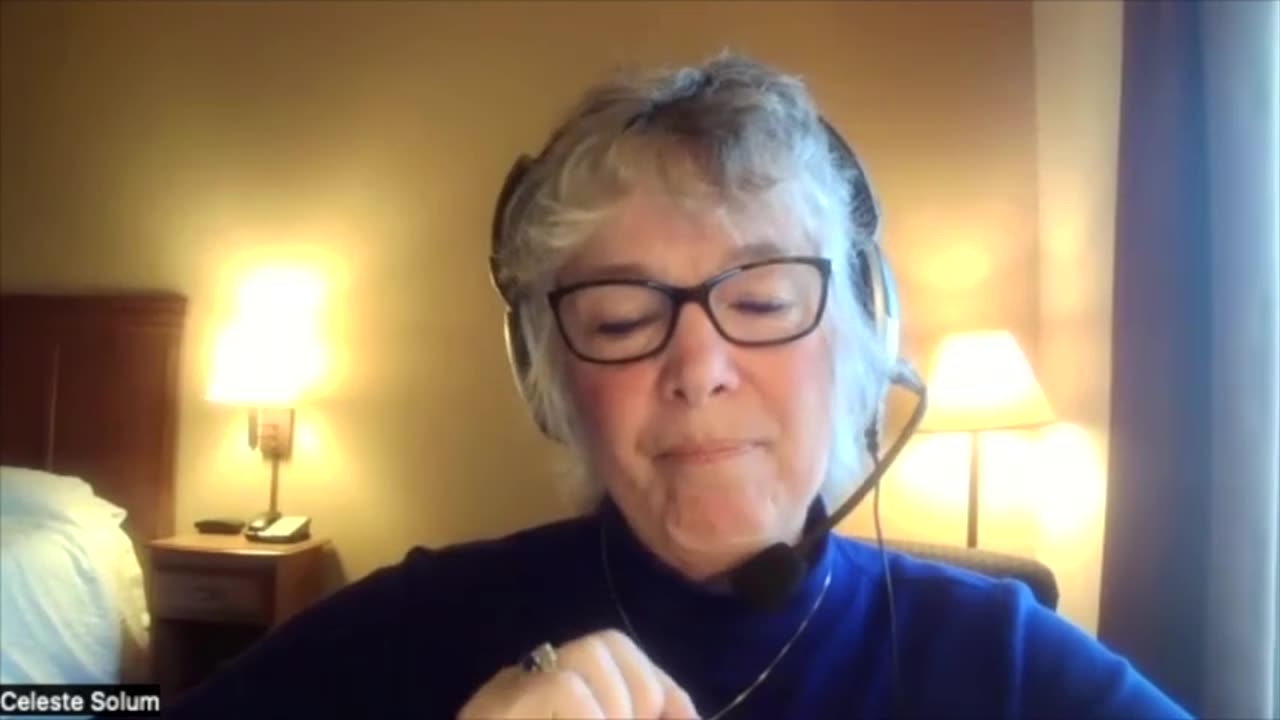Premium Only Content

Blueprint for Human Extinction - Synthetic Biology
Steve Quayle & Celeste Solum - Blueprint for Human Extinction - Synthetic Biology 4-27-2023
Steve Quayle & Celeste Solum - Blueprint for Human Extinction - Synthetic Biology 4-27-2023
---
See Link Below:
---
SENATE. REPT. 117-254 - GLOBAL CATASTROPHIC RISK MANAGEMENT ACT OF 2022
---
Accompanies:S.4488
---
Ep 4432: Steve Quayle & Celeste Solum - Luciferian Attack on God's People - Synthetic Biology 4-27-2023
---
FAIR USE FOR EDUCATIONAL PURPOSES
---
Mirrored From:
https://rumble.com/c/HagmannReport
---
SENATE. REPT. 117-254 - GLOBAL CATASTROPHIC RISK MANAGEMENT ACT OF 2022
---
Accompanies:S.4488
---
Committees:Senate Homeland Security and Governmental Affairs Committee
---
https://www.congress.gov/congressional-report/117th-congress/senate-report/254/1
---
Listen to Audio File:
https://app-na.readspeaker.com/cgi-bin/rsent?customerid=6927&lang=en_us&readid=report&url=https%3A%2F%2Fwww.congress.gov/congressional-report/117th-congress/senate-report/254/1
---
II. BACKGROUND AND NEED FOR THE LEGISLATION Global catastrophic threats can produce consequences severe enough to result in significant harm or destruction of human civilization at the global scale or lead to human extinction. Catastrophic events are difficult to foresee and while unlikely to occur, it is important to ensure that the U.S. government is better prepared for high-consequence events that could cause significant harm. According to the Global Challenges Foundation, some current risks include weapons of mass destruction (WMDs), catastrophic climate change, and ecological collapse.\1\ Natural catastrophes include pandemics, asteroid impacts, and super volcanic eruptions that require coordinated global response. One potential emerging risk is through technological advances, such as artificial intelligence (AI), being abused in a way that pose catastrophic risk.\2\ The National Intelligence Council (Council), in their 2021 Global Trends Report, provided that technological advances both mitigate and generate existential risk on a global scale.\3\ The Council believes that low-probability, high-impact events may be difficult and expensive to prepare for, but developing strategies for mitigation of such events can provide some resilience.\4\
---
Section 3. Interagency committee on global catastrophic risk Subsection (a) provides that within 90 days after enactment of this bill, the President is required to establish an interagency committee on global catastrophic risk. Subsection (b) lists the members of the committee as follows: the Assistant to the President for National Security Affairs; the Director of the Office of Science and Technology Policy; the Director of National Intelligence and the Director of the National Intelligence Council; the Secretary of DHS and the Administrator of the FEMA; the Secretary of State and the Under Secretary of State for Arms Control and International Security; the Attorney General and the Director of the Federal Bureau of Investigation; the Secretary of Energy, the Under Secretary of Energy for Nuclear Security, and the Director of Science; the Secretary of Health and Human Services, the Assistant Secretary for Preparedness and Response, and the Assistant Secretary of Global Affairs; the Secretary of Commerce, the Under Secretary of Commerce for Oceans and Atmosphere, and the Under Secretary of Commerce for Standards and Technology; the Secretary of the Interior and the Director of the United States Geological Survey; the Administrator of the Environmental Protection Agency and the Assistant Administrator for Water; the Administrator of the National Aeronautics and Space Administration; the Director of the National Science Foundation; the Secretary of the Treasury; the Chair of the Board of Governors of the Federal Reserve System; the Secretary of Defense, the Assistant Secretary of the Army for Civil Works, and the Chief of Engineers and Commanding General of the Army Corps of Engineers; the Chairman of the Joint Chiefs of Staff; the Administrator of the United States Agency for International Development; and other stakeholders the President determines appropriate. Subsection (c) requires the committee to be co-chaired by a senior representative of the President and the Deputy Administrator of the Federal Emergency Management Agency for Resilience.
-
 LIVE
LIVE
Sgtfinesse
1 hour ago💥Sunday Morning Hunt for Featherweight Artifact | New World PVP Server: Sclavia
567 watching -
 11:25
11:25
Film Threat
18 hours agoLET'S DISCUSS THE 2025 OSCAR NOMINATIONS | Film Threat News
13K3 -
 13:07
13:07
DEADBUGsays
2 hours agoThe Southport Massacre, The Great British Cover-Up
16.4K12 -
 25:26
25:26
hickok45
5 hours agoSunday Shoot-a-Round # 265
13K24 -
 30:55
30:55
Tundra Tactical
16 hours ago $15.96 earnedFaith, Family, Gun Rights : Tundra Tactical Interviews Erich Pratt Vice President Of GOA
88.5K17 -
 24:08
24:08
MYLUNCHBREAK CHANNEL PAGE
1 day agoUnder The Necropolis - Pt 4
229K62 -
 1:26:44
1:26:44
Tactical Advisor
1 day agoTrump Starting Strong/Shot Show Recap | Vault Room Live Stream 015
121K9 -
 49:13
49:13
SGT Report
1 day agoGILDED CAGE: A.I. PRODUCED MRNA VACCINES & THE ROAD TO HELL -- Sam Anthony
73K396 -
 17:00
17:00
BIG NEM
15 hours agoI Spent 10 Years Making a Movie About a 40 Year Old VIRGIN
9.42K -
 17:01
17:01
RealitySurvival
11 hours agoRussia's Anti-Satellite Weapon Could Disable Your Commuter Car!
7.23K